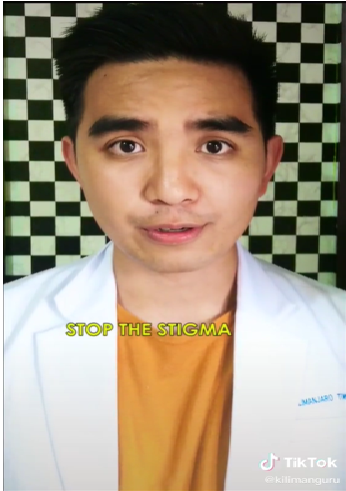By Arjun Narayan – Director, Trust & Safety, TikTok, Asia Pacific
Mental health remains one of the most neglected areas of public health globally. According to the World Health Organization, close to 1 billion people are living with a mental disorder yet countries on average spend a mere 2% of their health budgets on mental health, leaving many without access to quality mental health services. In the Philippines, the Department of Health urges the public to access free mental health e-learning course.
World Mental Health Day is observed on 10 October every year, and provides an opportunity for the world to come together to address the challenges around mental health. This year, World Health Organization (WHO), the World Federation for Mental Health (WFMH) and United for Global Mental Health (UnitedGMH) have joined forces to spark conversations on how the global community can work together through the Move for mental health: let’s invest campaign. The campaign highlights how the COVID-19 pandemic and the implications, including social distancing measures and economic downturns are fuelling fear and anxiety that have further impacted people’s mental health.
Another implication is the surge in the number of hours people spend online for work, entertainment and staying updated while remaining at home. The excessive time spent online has led to a new set of challenges, such as screen-time addiction and cyber bullying that have made it more important than ever to ensure a positive and balanced online environment. Along with the government and individuals, digital platforms play a big part to help users forge mental and digital resilience.
How digital platforms can be harnessed to promote mental health
From sharing mental health tips to personal struggles, digital platforms can play a critical role in raising awareness and educating users about mental health. TikTok for instance, launched the #thinkb4youdo challenge to encourage users in the Philippines and across the world to take a moment and consider, before partaking in negative behaviour or even dangerous acts online – from cyber bullying to self-harm. Such campaigns are becoming a call to action for the online community to play their part in creating a safe and positive environment for everyone.
With the time we spend online today, more people are becoming aware that maintaining digital wellness is important and they are leveraging digital platforms to raise such awareness. Case in point, medical intern and TikTok creator Kilimanguru addresses mental health in one of his videos captioning: “Mental health matters. STOP THE STIGMA.”
 https://www.tiktok.com/@kilimanguru/video/6870780070089231617
https://www.tiktok.com/@kilimanguru/video/6870780070089231617
However, digital platforms have a role that goes beyond just facilitating content sharing. There is also a need to ensure that a safe place is created on the platform for people to discover, create and connect. TikTok has rolled out more robust features over the years, such as Screen Time Management and Restricted Mode, and users are empowered to take more control over how much time they want to spend on TikTok and limit the appearance of content that may not be appropriate for them.
Make a personal commitment for a better mental health
Bringing up mental health challenges is a unique journey for everyone, but people should feel empowered to lead by example and share their battles with others to encourage them to get help. With digital platforms, we have actually seen a rise in people sharing their stories as a way to empower others. Each of us are responsible for our own mental wellbeing and there are practical ways that we as individuals can take to look after our mental health in the digital age, including:
- Reduce time online – We can take a proactive approach to limit the time we spend online by turning off our digital devices at certain times of the day such as when you are sleeping or spending time with our loved ones. We can also disable unnecessary notifications as often it is hard to resist looking at the constant buzzing of new messages even when we are about to go to sleep. There are various measures in place today that help us to control how much time we spend online and we should be making use of these measures actively.
- Change your focus – Many of us turn to devices like our phone purely as a force of habit to mindlessly kill time. But are you escaping into the digital world as a substitute for real life? Turning to apps like social media and forums may be easy and convenient, but there are often healthier, more effective ways to pass time. If you are feeling bored, consider exercising or taking up a new hobby. The takeaway is striking a balance between online and offline interactions and recognising that we do not have to be glued to our screens 24/7.
- Take time for reflection away from the screen – It is very important to have introspective time away from our digital devices and practicing mindfulness. Try journaling or meditating. Keep track of all the great memories and positives — and practice gratitude for all the people and things you have in your life.
While the above is by no means an exhaustive list, the key here is to make a commitment to prioritize our mental health. It is about taking the first step to understand what we can do as individuals and to act on it so that it is not just something that we talk about.
It takes a community to address mental health
Raising mental health awareness and eradicating stigma around the topic requires a whole-of-society approach. While each one of us can take concrete actions in maintaining our own mental health, we can also play a role in supporting friends and family who are struggling. Employers for example can take active steps to create employee wellness programs that can help to build a nurturing environment for their organizations.
Governments are increasingly committing to improving mental health services and making them accessible for all. They can also collaborate more closely with the private sectors and communities to understand the current needs and build relevant solutions to address current gaps. The private and public sectors will need to collaborate more closely than ever before to raise awareness on this crucial issue. Public-private partnerships and programs can help support efforts to raise awareness about mental health.
This digital day and age has certainly brought about many new challenges, and it is absolutely crucial that digital platforms do their part to help users forge mental and digital resilience.
However, the responsibility of promoting mental health does not fall on one person, party or organization. It requires a united approach and everyone can do their part to improve mental health and help others suffering from mental illnesses to expunge the stigma of mental health.




